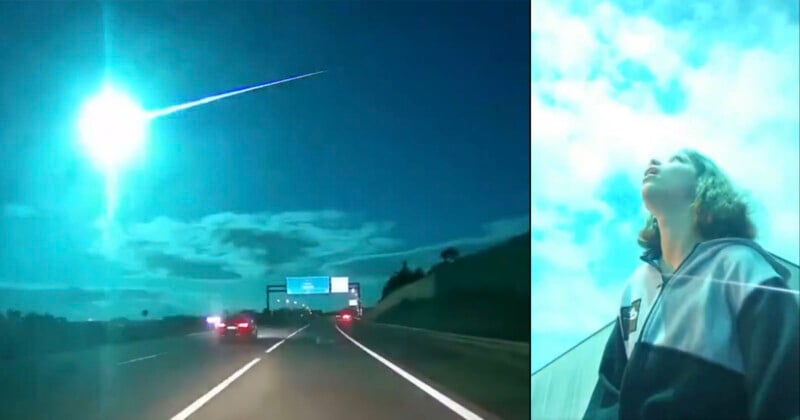
An unexpected meteor lit up the skies across Spain and Portugal last weekend with the bright green fireball serendipitously caught on camera.
The European Space Agency (ESA) captured the meteor on a camera in Cáceres, Spain at 18:46 local time on Saturday evening. The ESA says the fireball was from a comet passing over the Iberian peninsula at around 100,000 miles per hour.
And thanks to the ubiquity of cameras, everyday folk who happened to be filming at the exact moment the meteor passed overhead were able to capture once-in-a-lifetime imagery.
☄️😍 ESA’s fireball camera in Cáceres, Spain, spotted this stunning meteor last night!
Our Planetary Defence Office are currently analysing the size and trajectory of the object to assess the chance that any material made it to the surface.
Credit: ESA/PDO/AMS82 – AllSky7 pic.twitter.com/gSU4unncQW
— ESA Operations (@esaoperations) May 19, 2024
With so many cameras in the world, some people just get lucky and create perfection. https://t.co/6vGnp7QQBD
— Scott Manley (@DJSnM) May 20, 2024
JUST IN: Meteor spotted in the skies over Spain and Portugal.
This is insane.
Early reports claim that the blue flash could be seen darting through the night sky for hundreds of kilometers.
At the moment, it has not been confirmed if it hit the Earth’s surface however some… pic.twitter.com/PNMs2CDkW9
— Collin Rugg (@CollinRugg) May 19, 2024
#Événement : Une météorite à illuminé le ciel du Portugal 🇵🇹 d’un bleu étincelant hier soir à la surprise des habitants qui se trouvaient à l’extérieur au moment de son passage.
Des milliers de portugais ont partagés leurs réactions à l’événement sur les réseaux sociaux. pic.twitter.com/OE4HUCUr3F
— NOVA PORTUGAL (@NVPORTUGAL) May 19, 2024
Massive meteor magically turns the whole sky into glorious blue in Portugal. pic.twitter.com/uStVYLM3Mh
— Target Reporter (@Target_Reporter) May 18, 2024
Space notes that shooting stars such as this one are pieces of material that break away from larger celestial bodies such as asteroids, comets, the Moon, or even other planets. The meteors enter Earth’s atmosphere at colossal speeds and begin to encounter friction which causes them to burn brightly.
Which color the meteor burns indicates its chemical composition; in this case, the green means the fireball is burning magnesium.
The hunt is underway to find the meteor, but there’s no guarantee it did hit the ground and may have burned up entirely.
